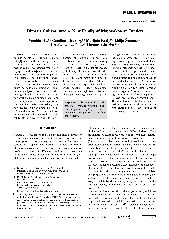摘要
A new class of potent DNA binding agents is presented. Dimeric calix[4]arenes with cationic groups at their upper rims and flexible alkyl bridges can be synthesized from triply acyl-protected calix[4]arene tetramines in relatively short synthetic sequences (35 steps). The compounds attach themselves to double-stranded nucleic acids in a noncovalent fashion, with micro- to nanomolar affinities. Guanidinium headgroups with their extended hydrogen-bonding fingers are more powerful than ammonium groups, and the benzylamine series is superior to the anilinium series (see below). The new ligands easily distinguish between RNA and various DNA types, and produce characteristic changes in UV/Vis, fluorescence, CD, as well as NMR spectra. Especially extended oligonucleotides of more than 100 base pairs are bound with affinities increasing from RNA (10 mu M Kd)%26lt;AT-rich (1 mu M)%26lt;GC-rich DNA double strands (10010 nM). Ethidium bromide displacement studies confirm this order. CE50 values are remarkably low (14 mu M), and are more than 300 times lower than that of spermine, which is a typical backbone binder. Stoichiometries are rather high (one calixarene dimer per two BP), suggesting a potential aggregation of bound ligands inside the major groove. Most UV/Vis melting curves display an inverted shape, and start from drastically enhanced absorption intensities for the DNA complexes. DAPI displacement studies prove that up to one equivalent of calixarene dimer can be accommodated in the dye-loaded DNA. RNA complexation by calixarene dimers is accompanied by a drastic CD spectral transition from the typical A-form to a perfect B-signature, providing further experimental evidence for major-groove binding. The orientation of the ligands can be deduced from NMR titrations and is reproduced in Monte-Carlo simulations on 1:1 complexes in water.
- 出版日期2012-3
